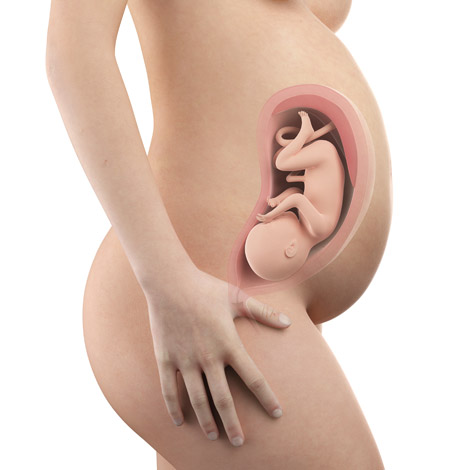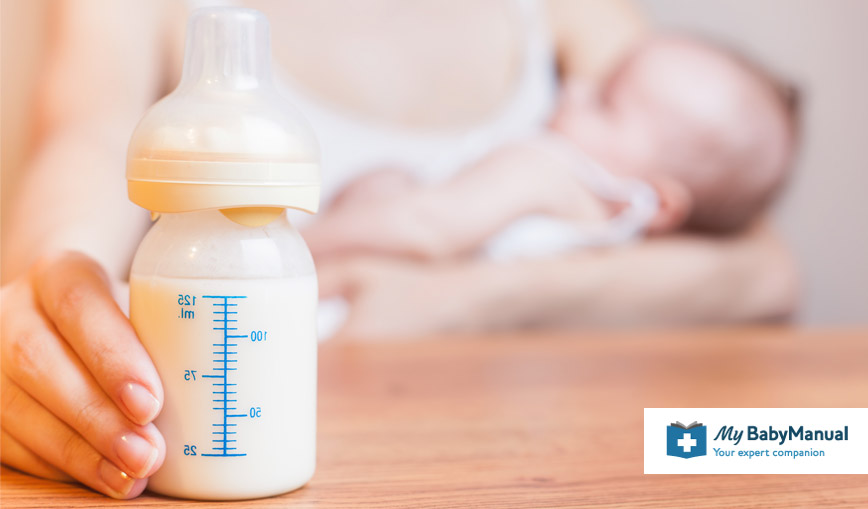Your baby this week
POUNDS IN WEIGHT
Her lungs are almost at full development.
Your baby will be practising sucking.
Her bones have become harder.
How big is your baby?
She is continuing to gain weight at a steady pace, now weighing 1.9kg (4lb 1 oz). This makes her roughly the same weight as a pineapple. She is ever so slightly longer, too, measuring 43.7cm (17.2 in).

How big is your baby?
She is continuing to gain weight at a steady pace, now weighing 1.9kg (4lb 1 oz). This makes her roughly the same weight as a pineapple. She is ever so slightly longer, too, measuring 43.7cm (17.2 in).

What does your baby look like?
Your baby’s complexion is now less red because of the white fat under her skin, and she is looking a lot less wrinkled.
Changes in your body this week
Your bump is likely to be making normal activities more taxing, and you may well be feeling very tired as you get closer and closer to your due date. This is probably not helped by your bump making it difficult for you to get comfortable. As you’re heavier on your feet, you may also be noticeably clumsier than usual. Don’t worry though, it happens to most mums-to-be towards the end of their pregnancy.
How your baby is developing
Although her bones have become harder, her skull remains pliable, making it easier for her to make her way through the birth canal. Her lungs are almost at full development.
Not only will she be practising sucking, but she’ll also have developed the “rooting” reflex. This reflex will enable her to find your nipple during breastfeeding.

How your baby is developing
Although her bones have become harder, her skull remains pliable, making it easier for her to make her way through the birth canal. Her lungs are almost at full development.
Not only will she be practising sucking, but she’ll also have developed the “rooting” reflex. This reflex will enable her to find your nipple during breastfeeding.

Health concerns
Your pregnancy hormones relax the muscles of your digestive system, meaning that heartburn and indigestion are two common pregnancy ailments which cause discomfort and potentially sleepless nights. Thankfully, there a few things you can do to help ease the symptoms.
Try to eat little and often – eating several smaller meals throughout the day will make sure you don’t overfill your stomach. You should also make sure your last meal is at least three hours before sleeping, so your digestive issues don’t disrupt your sleep cycle.
Citrus fruit, caffeine, tomatoes, chocolate, and fatty foods can worsen symptoms, so try to avoid these. You should also avoid lying down immediately after eating – this puts pressure on your stomach. Try to sit upright instead to allow your food to digest properly, use pillows propped in your back to help you avoid slumping.
Are there any symptoms you should be looking out for?
You may be feeling pain in your pelvis. This can be caused by a slight misalignment of the joints, which is a condition known as symphysis pubis dysfunction (SPD). It’s also referred to as pelvic girdle pain. Pregnant women can experience SPD at any stage, but it’s the most common in the later stages of pregnancy. The Pelvic Obstetric & Gynaecological Physiotherapy network say SPD affects one in five pregnant women.
The condition may cause pain in your pubic area, groin, inner thigh, lower back, and hips. It may also cause a lot of clicking and grinding when you walk, which can become problematic when trying to keep up light exercise. Widening your legs beyond a certain point is also likely to be painful, and this can make labour difficult. This is why it’s important to get diagnosed as early as you can so that you can be given the right treatment and advice to make sure you remain comfortable.
So, if you believe you’re suffering from SPD, talk to your midwife or doctor about it. They should be able to offer a treatment suited to you, which may be a pelvic support belt and a recommendation of certain exercises that will improve the strength of your pelvis and back.
Safety first
Any pregnancy-related insomnia is likely to get worse in the later stages of your pregnancy. The resulting exhaustion can make it seem impossible to get through the day, not to mention drive your stress levels through the roof, putting both your physical and mental health at risk.
If you’re not getting enough sleep at night, then you could try to make up the lost hours, especially if you are already on maternity leave. Try to take some naps during the day. Gentle exercise, such as yoga, swimming, and walking, can help you relax and make you physically tired so that it’s easier to drift off to sleep.
A light snack may help before bed may help. You can try eating food that contains tryptophan, which is known to encourage sleepiness. Eating slow-release carbohydrates, such as fresh fruit and non-starchy vegetables, will help you keep your energy levels up during the day – but avoid stimulants such as caffeine and sugary snacks.

Important issues this week
If you’re planning to breastfeed, then it’s a good idea to start familiarising yourself with the numerous positions to make it comfortable and you practice becoming adept at doing it in public while still in the privacy of your own home. Why not read up on the benefits of breastfeeding, especially if you’re nervous about it and hopefully the subject will be covered thoroughly in your antenatal classes – don’t be afraid to speak up if you’re worried about breastfeeding, many mums struggle and although breast is definitely best, there can be many reasons why going on to the bottle may work better for you.
To help with feeding, consider making some purchases to help support you and your new-born baby, such as a feeding pillow and nursing bras.
Keeping fit, staying healthy
Now is a great time to practise some of the positions that could help you during labour. Knowing these positions now will help you be as comfortable as you possibly can be in a few weeks’ time.
During the first stage of labour, staying upright will help make your contractions more efficient and therefore allow the process to go faster. It could also mean you feel less pain. You might want to try leaning against your birthing partner for support. To relieve backache, going on all fours will take the weight off your spine. This first stage can take a long time.
Going down on your hands and knees is also effective for the second stage of labour, which is when you’ll have to push. Squatting with your pelvis wide open (making sure you have the proper support) is also beneficial for this stage, and so is lying on your side in a semi-prone position.
Practice these positions at home so you know how to easily get into them when your labour starts. And, as always, speak to your midwife, she’ll be able to give you advice and guidance so that you’re as ready as you can be to give birth to your beautiful new baby.
Looking forward; planning ahead
Speaking about getting ready for the baby, have you made sure your car is ready to accommodate the new arrival? Unlike some of the purchases made for your baby, a car seat is something that should not be bought second-hand. This is because you may not know if a second hand car seat has been involved in an accident and whether it’s been structurally damaged. It’s important it’s the best possible quality you can afford, as it will be protecting your baby’s life during travel.
Car seats are arranged in groups based on the baby’s size. The law states that you must buy a seat that is appropriate for your child’s size and ensure it’s correctly fitted in accordance with the manufacturer’s instructions.
This chart from the Royal Society for the Prevention of Accidents says that a new-born baby will require either a Group 0 or Group 0+ rearward-facing seat (they may also be classed as i-seats).



